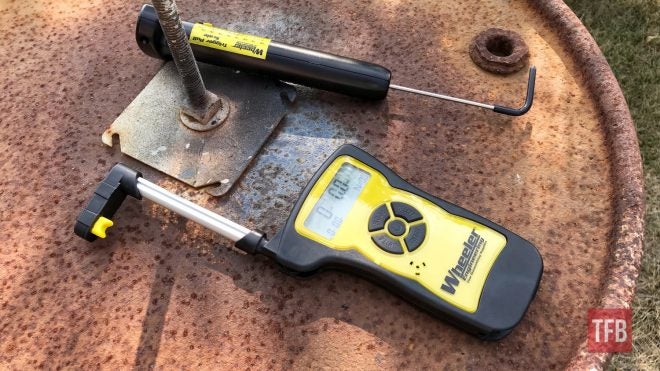Welcome everyone to the TFB Armorer’s Bench! As mentioned in the little blurb, this series will focus on a lot of home armorer and gunsmith activities. In this article sponsored by Wheeler, Tipton, Caldwell, and Frankford Arsenal, I decided to take a closer look at the two trigger gauges that Wheeler Engineering currently offers. Wheeler is one of a few companies out there that offer affordable examples of gunsmith technology. One example is a trigger gauge which measures the number of pounds it takes to bring a trigger to the breaking point. Let’s jump into the Wheeler Trigger Gauges!
TFB Armorer’s Bench: Closer Look – Wheeler Trigger Gauges
Welcome to our recurring series of Armorer’s Bench which is made possible and brought to you by Wheeler, Tipton, Caldwell, and Frankford Arsenal who are our sponsors. Here, we at TFB hope to inform, entertain, and even inspire any would-be gunsmith or armorer out there. Ideally, with the information I provide and with the help of our sponsors, you can have some useful knowledge pertaining to the conservation and improvement of firearms technology while at the same time sharing experiences and teaching each other new tips and tricks along the way in the comments. Digging deep into what it is to be an armorer or gunsmith has significance but what is important is what those people do to show they’ve earned that title. I am happy to share my experiences and knowledge and hope it is informative!
Make your personal safety a priority:
- Practice proper gun safety. Always make sure before the firearm hits your bench that it is unloaded and safe to be handled.
- Wear the proper safety equipment. The main one would be safety glasses (decent ones) since parts are often under spring tension and you may work with high RPM tools. Other honorable mentions would be latex gloves or a respirator when working with potentially harmful solvents and oils. Also hearing protection when working with loud machinery or test-firing firearms.
- Modifications, alterations, and customizations will void your firearm’s warranty 9.5 times out of 10. Please take that into consideration before attempting any at-home gunsmithing.
- If you are unsure about proper safety practices, disassembly procedures, or warranty standards, stop, put down the tools, and consult a competent gunsmith.
Brief Overview: Wheeler Trigger Gauges
As I mentioned above, trigger pull gauges are tools used to tell how many pounds of pressure it takes to drop the striker or hammer. Trigger pull gauges typically have a long extension arm with a 90-degree turn that is placed against the trigger and that bar is pulled until the relationship between the sear and striker/hammer slips, breaks, fires, etc. Trigger pull gauges are typically used by gunsmiths particularly if they are working on a trigger and attempting to adjust its weight.
Some triggers have built-in features that make them adjustable. Others need to be polished, stoned or fitted in order to properly adjust the weight. Consult a professional anytime this is necessary. Done incorrectly and this can be extremely dangerous. A lot of professionally established gunsmiths will refuse to do trigger jobs because of the liability. Not because they could do a poor job but because people are flawed and make mistakes and if a customer has an accident as a result of negligence they can potentially blame said gunsmith for their own shortcomings.

When I went to school for gunsmithing we had a weighted version of a trigger pull gauge which is a bit more old school and not as rough of an estimate as you may think in comparison to ones that are featured here. It would work by hanging a weighted bar on a trigger and adding weights and letting gravity do the rest. If you added 5.5 pounds and the hammer/striker dropped then that’s what the weight was. Pretty straightforward and easy but this older method is cumbersome and may get in the way or not work right if a gun is not an average shaped gun. Other than that style that was most likely homemade, I have seen some that would hook onto the backside of a cocking piece on a striker like most bolt action military surplus rifles have.
Note: Something to remember regarding using trigger gauges is that there can be a lot of human error involved and it is wise to average out a number of results in order to best determine the trigger pull weight you are dealing with.
Wheeler Manual Trigger Pull Scale
This Wheeler pull scale is one that I have had for years and it has served me plenty well. It is very affordable coming in at $24.99. I have used it for every review that mentions a trigger pull weight. It is pretty cheap in construction but has never cracked, warped, or broken. The only noticeable “wear” is at one point some cleaning oil soaked into the sticker that has the weights listed and has changed the color.
The gauge is extremely easy to use. Simply start by moving the yellow indicator all the way to the beginning. Place the rubber-coated trigger bar against the trigger and pull slowly. Do this 3-5 times and average the pounds of pressure.

Pros of the Wheeler Manual Trigger Pull Scale:
- Cheap
- Easy to use
- Accurate enough for rough estimates
- Light
- Handy size
Cons of the Wheeler Manual Trigger Pull Scale:
- Plastic has the potential to break, warp, bend, etc
- The sticker can be removed or torn
- The sticker can possibly be moved or placed incorrectly
- Max Visual Weight of 8lbs
Note: From what I have seen, most Wheeler products (bought directly from their website) come with some sort of card or paper that shows factory tests that were done.
Wheeler Professional Digital Trigger Gauge
This Wheeler trigger gauge is one that Wheeler was nice enough to send me to work with for these Armorer’s Bench articles and I really wanted to pit it against the cheaper one and see how it performed. This one sits at $74.99 which if you are used to buying tools marketed for gunsmiths is a pretty normal expense. My initial thoughts on this digital gauge were hopeful. It was packaged well and has an excellent manual explaining how everything works. It does not come with any batteries so that is disappointing. The shell of the gauge is plastic and I was mostly okay with this if it works. Well, did it?

It worked super well. But! It is very sensitive. The gauge arm swings on a hinge and this makes it feel sort of floppy and fragile. I thought it was super cool and nice that the trigger bar portion of the gauge has two different tips that you can pick between for different shaped triggers. One is mostly flat and the other is very concave. When holding the gun in one hand (I was using a 1911) and using the gauge in the other like I normally would with the others, I noticed that the flex in the hinged arm of the gauge was giving me strange readings and that’s enough variability for me to lose some hope.
I threw the 1911 into a gun vise (offered by Tipton) and tested it in a fixed location. This worked leagues better as long as I pulled slowly and carefully. The digital screen gives you different modes to play around with and I just rolled with the peak mode and pressed the enter button so it would average all my trigger pull weights. After five pulls I got an average of 4lbs 14.3oz which is super close to the 5lbs I was getting with the manual gauge.

I highly recommend having a work-holding device like a vise for this gauge and make sure to read the manual to get the hang of the controls. Overall, I think it is a valuable tool just like the other and is only a little more precise. It is dealer’s choice if you want this one but I would not hesitate to recommend it if someone was looking for a little more precision. Just be careful with it since it is still mostly made of plastic.

Pros of the Wheeler Professional Digital Trigger Gauge:
- Sensitive
- Accurate to pounds and ounces
- Different trigger pieces for different shaped triggers
- Digital
- Easy and concise to read
- Easy to use (read the manual)
Cons of the Wheeler Professional Digital Trigger Gauge:
- Sensitive (again)
- Can be initially confusing
- Does not come with batteries
- Still plastic
- On the bulky side
- Does not feel like it can take a beating
- Expensive
- Gauge arm is floppy feeling
- Max Weight is only 12lbs…not even double the Manual Gauge
Closing Thoughts: Wheeler Trigger Gauges
Trigger pull gauges are handy for those that do trigger jobs, reviews, or are simply curious. They can help determine what poundage your hunting rifle is after you loosened or tightened the tension screw on your adjustable trigger. They are a valid tool for anyone and they can be extremely simple. For the average Joe I would recommend the manual one because it does not need to be tedious or exact, nor does it need to break the bank. If things are a little more intensive and they require a more accurate tool for the job, have at the digital one!

As always, thank you for reading TFB! Be safe out there, have fun while shooting, and we will see you next time for the TFB Armorer’s Bench brought to you by Wheeler, Tipton, Caldwell, and Frankford Arsenal! Also, let us know what you think in the comments below! We always appreciate your feedback.
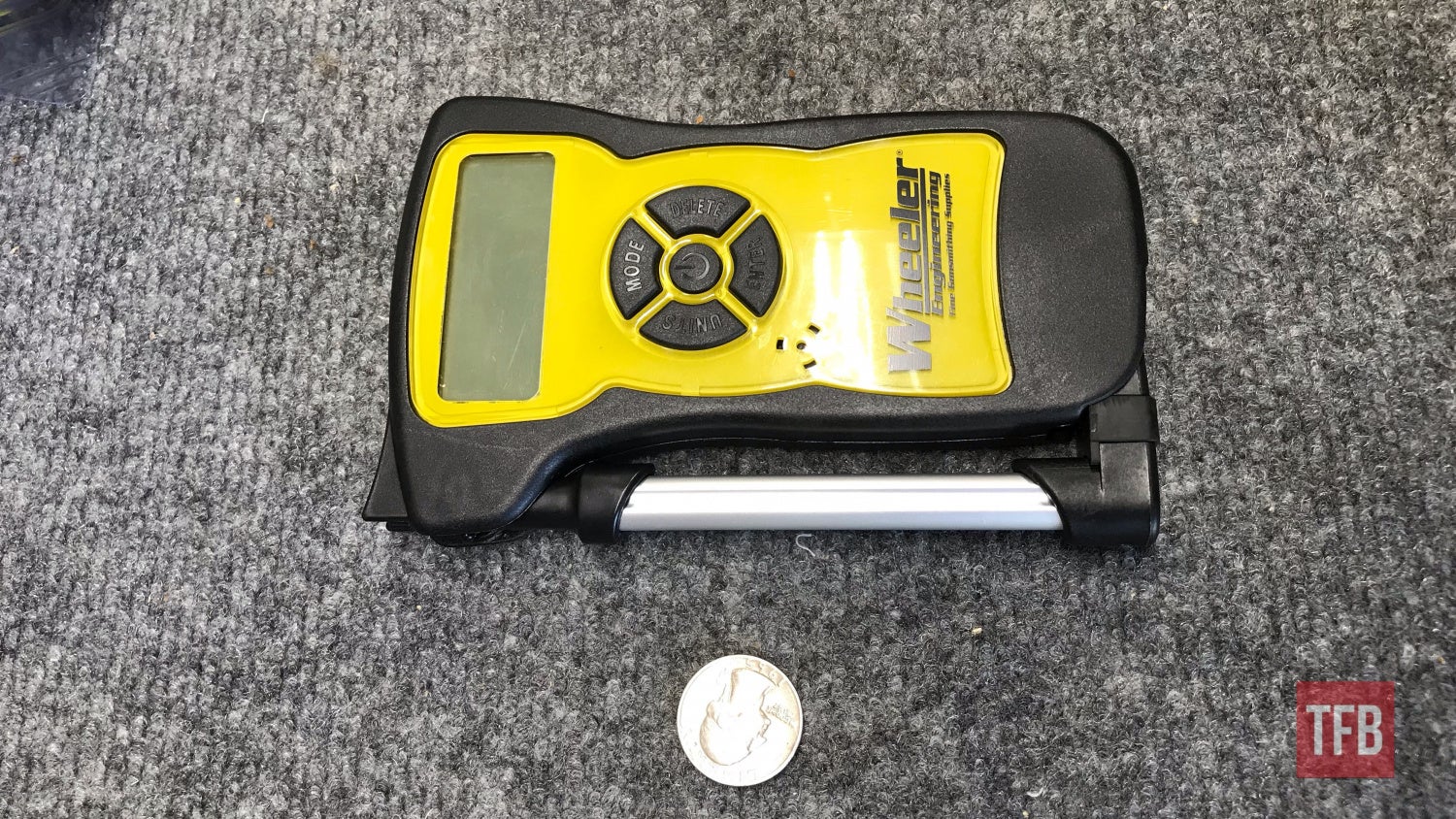







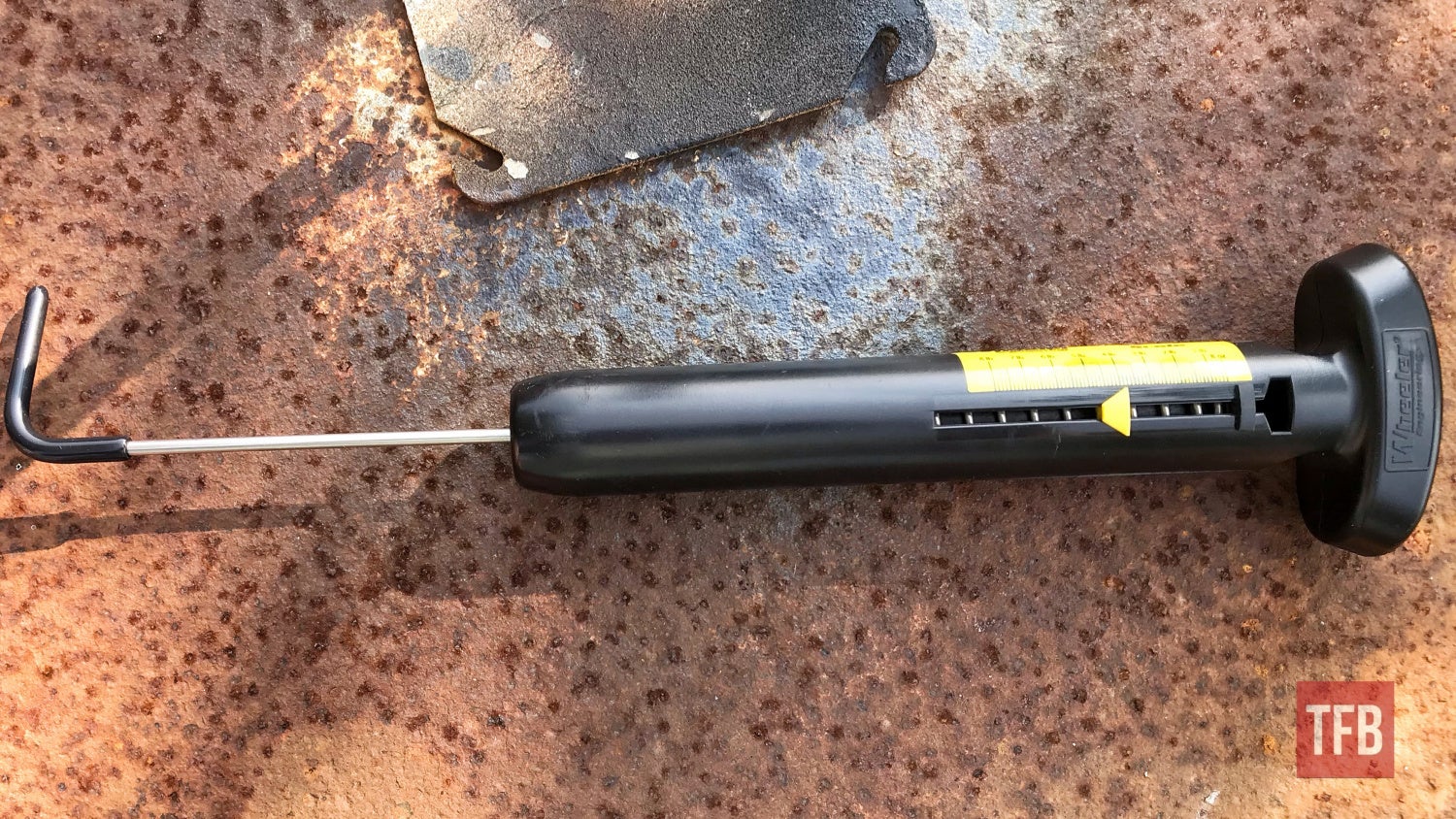


TFB Armorer’s Bench is brought to you by Wheeler, Tipton, Caldwell, and Frankford Arsenal!
Pro Range Glasses, Clear

The Caldwell® Pro Range Glasses feature a stylish wrap-around design and are a great choice for all shooters. They feature an adjustable nose piece and temples for all day comfort. The scratch resistant lens meets ANSI Z87.1 standards and offers 99.9% UV protection.
Manual Trigger Pull Scale
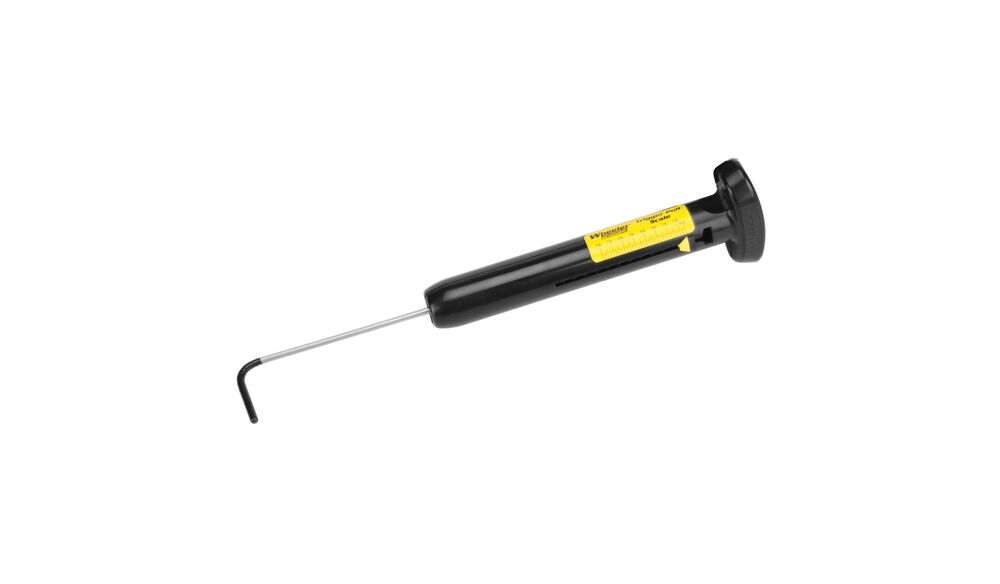 The Wheeler® Trigger Pull Scale accurately measures trigger pull weight from 8 ounces to 8 pounds. It features an ergonomically shaped handle for consistent direction of pull. Highly visible increment markings and easy to read sliding indicator that stays on the maximum weight registered make it easy to read. It measures in 2 ounce increments and is accurate to +/- 2 oz. The trigger pull scale is an excellent tool for use when adjusting triggers to ensure accuracy and maintain safe performance.
The Wheeler® Trigger Pull Scale accurately measures trigger pull weight from 8 ounces to 8 pounds. It features an ergonomically shaped handle for consistent direction of pull. Highly visible increment markings and easy to read sliding indicator that stays on the maximum weight registered make it easy to read. It measures in 2 ounce increments and is accurate to +/- 2 oz. The trigger pull scale is an excellent tool for use when adjusting triggers to ensure accuracy and maintain safe performance.
Professional Digital Trigger Gauge
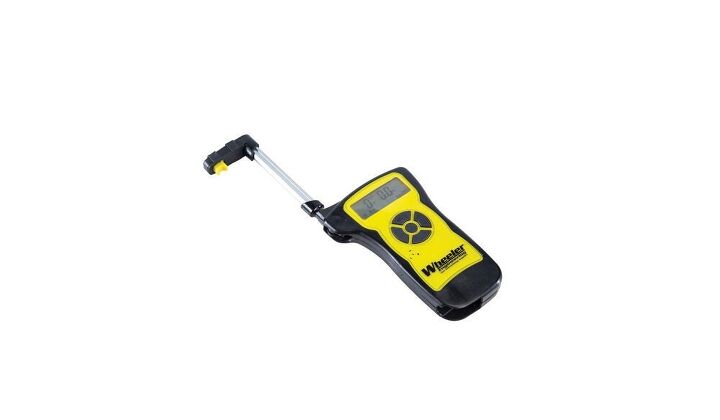
Wheeler’s Professional Digital Trigger Gauge features an over-molded design and soft touch buttons for comfort and a consistent line of pull. Includes bladed trigger adapter to allow use with triggers that have internal safety blades such as: Glock®, Ruger®, Savage®. Also includes a foam lined storage case.
Tipton Best Gun Vise
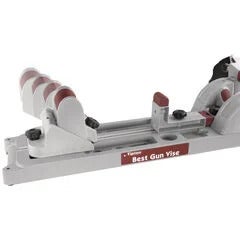
Tipton 1911 MAG WELL VISE BLOCK
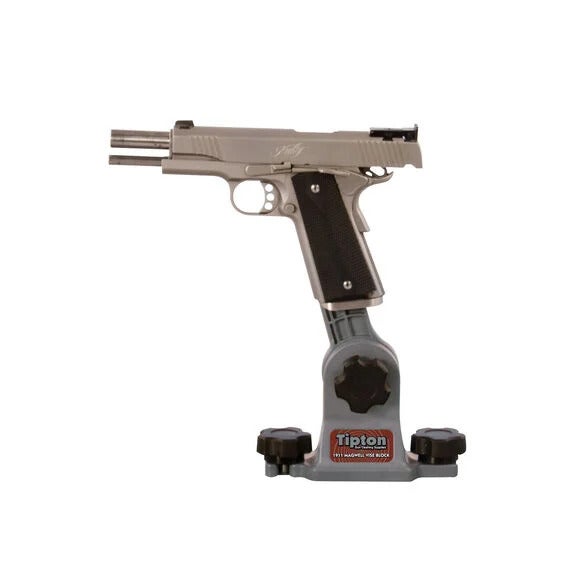 The Tipton® 1911 Mag Well Vise Block is quite possibly the handiest tool a 1911 owner could ask for. Designed for use with the Tipton® Best Gun Vise™, this center support slides into the magazine well and provides a steady base for cleaning or light gunsmithing on your 1911. Users without a Best Gun Vise can mount the Mag Well Vise Block directly to their bench top with the included fasteners. Loaded with handy features, this tool is a must have for anyone with a 1911.
The Tipton® 1911 Mag Well Vise Block is quite possibly the handiest tool a 1911 owner could ask for. Designed for use with the Tipton® Best Gun Vise™, this center support slides into the magazine well and provides a steady base for cleaning or light gunsmithing on your 1911. Users without a Best Gun Vise can mount the Mag Well Vise Block directly to their bench top with the included fasteners. Loaded with handy features, this tool is a must have for anyone with a 1911. Your Privacy Choices
Your Privacy Choices
